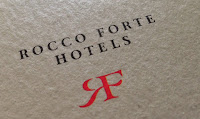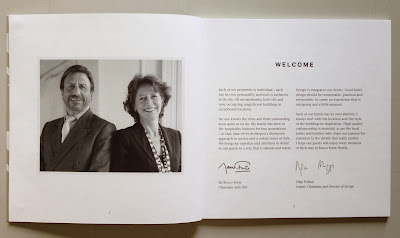What is ...Number 17
Regular followers of this blog will know that in the middle of the month, I publish a "What is ....? post. The article covers various aspects of paper, printing and finishing in greater depth. However, many of these subjects are complex, so these posts are only intended to be a brief introduction to the topic.
What is ...Chlorine Free?
 Shortly after I became a paper merchant in the mid to late 1980's, alarming reports that the chlorine chemicals used in the bleaching of pulp were causing cancer causing dioxins were widely talked about and made international news. Greenpeace launched a campaign against Chlorine bleaching in pulp producing companies and they carried out research and lobbied manufacturers, culminating in the Greenpeace guide to paper published in January 1990. I went and bought a copy, which I still have and it continues to make interesting reading.
Shortly after I became a paper merchant in the mid to late 1980's, alarming reports that the chlorine chemicals used in the bleaching of pulp were causing cancer causing dioxins were widely talked about and made international news. Greenpeace launched a campaign against Chlorine bleaching in pulp producing companies and they carried out research and lobbied manufacturers, culminating in the Greenpeace guide to paper published in January 1990. I went and bought a copy, which I still have and it continues to make interesting reading. As I understand things, it was only in the mid 1980's when scientific machinery was developed that could detect the miniscule amounts of dioxins that are highly toxic and carcinogenic. These dioxins are not present in the finished paper, they appear in discharges from pulp mills with emissions of Adsorbable Organic Halogens (measured as AOX) within the effluent being measured in kg per tonne of pulp produced. The Greenpeace initiative was undoubtedly one of the most successful environmental programmes (possibly ever) as under this pressure, the pulp and paper industry turned it's processes around and greatly eliminated the use of chlorine in just a few years.
As I understand things, it was only in the mid 1980's when scientific machinery was developed that could detect the miniscule amounts of dioxins that are highly toxic and carcinogenic. These dioxins are not present in the finished paper, they appear in discharges from pulp mills with emissions of Adsorbable Organic Halogens (measured as AOX) within the effluent being measured in kg per tonne of pulp produced. The Greenpeace initiative was undoubtedly one of the most successful environmental programmes (possibly ever) as under this pressure, the pulp and paper industry turned it's processes around and greatly eliminated the use of chlorine in just a few years.
By the early 1990's several European pulp mills had invested in 'Chlorine Free' pulp production. The predominant (and environmentally worse) type of bleaching used Chlorine Gas and this was the bleaching method that needed to be eradicated. Replacing this method are two processes:
Elemental Chlorine Free (ECF): A less harmful bleaching method using Chlorine Dioxide (no Chlorine gas) which produces much lower levels of organochlorines.
Totally Chlorine Free (TCF): The Oxygen bleaching process uses no Chlorine or Chlorine containing chemicals.
 One of the pioneers of TCF pulp is a company called Sodra Cell. They were an early investor in the Oxygen bleaching technology and very cleverly marketed their pulp, called Z pulp, not only to paper manufacturers but to paper merchants, designers and large end users and corporates. Z pulp stands for 'Zero Pulp' as it contains zero chlorine.
One of the pioneers of TCF pulp is a company called Sodra Cell. They were an early investor in the Oxygen bleaching technology and very cleverly marketed their pulp, called Z pulp, not only to paper manufacturers but to paper merchants, designers and large end users and corporates. Z pulp stands for 'Zero Pulp' as it contains zero chlorine.
They even produced a guide to TCF papers which listed the grades and brands of papers manufactured using Z pulp.
I've noticed that in recent years a new acronym PCF has been referred to and it has come over from North America. PCF stands for Processed Chlorine Free. The term is used to describe papers made using some portion of recycled content (minimum 30%) which meets EPA (Environmental Protection Agency) guidelines. An important point is that PCF papers have not been re-bleached with chlorine containing compounds, but it is unknown if the recycled content was bleached with chlorine or chlorine compounds. You can read more here: www.chlorinefreeproducts.org
As far as I am aware, there are no PCF accredited products available in Europe.
 If you are interested in this subject, there's a great book titled: 'Paper Trails - From Trees to Trash, the true cost of paper' by Mandy Haggith. This not only covers forestry but also the bleaching angle.
If you are interested in this subject, there's a great book titled: 'Paper Trails - From Trees to Trash, the true cost of paper' by Mandy Haggith. This not only covers forestry but also the bleaching angle.http://www.amazon.co.uk/Paper-Trails-From-Trees-Trash/dp/0753513293
Posted by Justin Hobson 18.05.2015


















































